Storytelling is an ancient art; it can engage, inspire, and move audiences at a deeper emotional level.
In the world of advertising, crafting a compelling brand narrative isn’t just about selling a product; it’s about creating an experience that resonates with your audience, builds trust, and leaves a lasting impression.
If you’re wondering how to elevate your brand narrative and make your ads stand out, this article will introduce you to four powerful storytelling techniques that can transform your marketing efforts.
- Understanding the Importance of Brand Narrative in Advertising
- Four Effective Storytelling Techniques to Enhance Your Brand Narrative
- Implementing Storytelling Techniques in Google Ads Campaigns
- Case Studies: Brands Successfully Using Storytelling in Advertising
- Best Practices for Developing a Cohesive Brand Narrative
- Conclusion: Mastering the Art of Brand Narrative in Advertising
- Frequently Asked Questions About Brand Narrative in Advertising
Understanding the Importance of Brand Narrative in Advertising
When it comes to advertising, a strong brand narrative is more than a tagline or a logo—it’s the story that defines who you are, what you stand for, and why your audience should care.
A well-crafted narrative can create an emotional connection that drives consumer loyalty and distinguishes your brand in a competitive marketplace.

undefined
Defining Brand Narrative
Your brand narrative is the overarching story that encompasses your brand’s mission, vision, and values.
It’s the thread that ties all your marketing efforts together, ensuring consistency and clarity across every touchpoint.
A strong narrative communicates not just what you do but why you do it, giving your audience a reason to believe in and support your brand.

An artistic depiction of storytelling fostering consumer engagement through emotional and communal connections.
The Role of Storytelling in Consumer Engagement
Storytelling engages the audience with your brand since it represents and appeals to their values and aspirations.
It allows you to create a more engaging experience with your brand through relatable narratives, rather than merely listing facts or features of your product.
By connecting with your brand’s story, your audience is more likely to relate and engage with it.
- It evokes emotions that inspire action, whether it’s making a purchase or sharing your message.
- It builds trust by showcasing authenticity and transparency.

A visual representation of how a brand narrative impacts consumer trust, featuring elements of connection and security.
Impact of Brand Narrative on Consumer Trust
In today’s competitive landscape, trust is a valuable currency.
Consumers are more likely to support brands that align with their values and demonstrate integrity.
A well-articulated brand narrative builds trust by showing your audience that your brand is not just about the bottom line but about making a difference.
By sharing your journey, challenges, and triumphs, you create an aura of authenticityThe quality of being genuine, real, or true to one's values and principles. that resonates with your audience.
Trust leads to loyalty, and loyal customers are not just repeat buyers; they are advocates who amplify your story.
Crafting a strong brand narrative helps distinguish your brand in the marketplace and builds emotional connections with your audience, driving loyalty and trust.

A visual representation of four storytelling techniques that enhance a brand narrative, connected in a dynamic pattern.
Four Effective Storytelling Techniques to Enhance Your Brand Narrative
Developing a compelling brand narrative is essential for connecting with your audience.
Here are four storytelling techniques to elevate your brand’s message:

A symbolic depiction of the Hero’s Journey framework, illustrating the hero’s path through challenges and transformation.
Utilizing the Hero’s Journey Framework
The Hero’s JourneyA narrative framework involving a protagonist's transformative journey through challenges. is a classic storytelling structure where the protagonist embarks on an adventure, faces challenges, and returns transformed.
Applying this framework to your brand narrative can make your message more relatable and engaging.
Position your brand or customer as the hero overcoming obstacles, which can inspire and resonate with your audience.

undefined
Incorporating Emotional Branding Strategies
Emotional branding focuses on creating a deep emotional connection between the brand and consumers.
By tapping into emotions like happiness, trust, or nostalgia, you can foster loyalty and differentiate your brand.
Craft stories that evoke these feelings to build a strong, emotional bond with your audience.
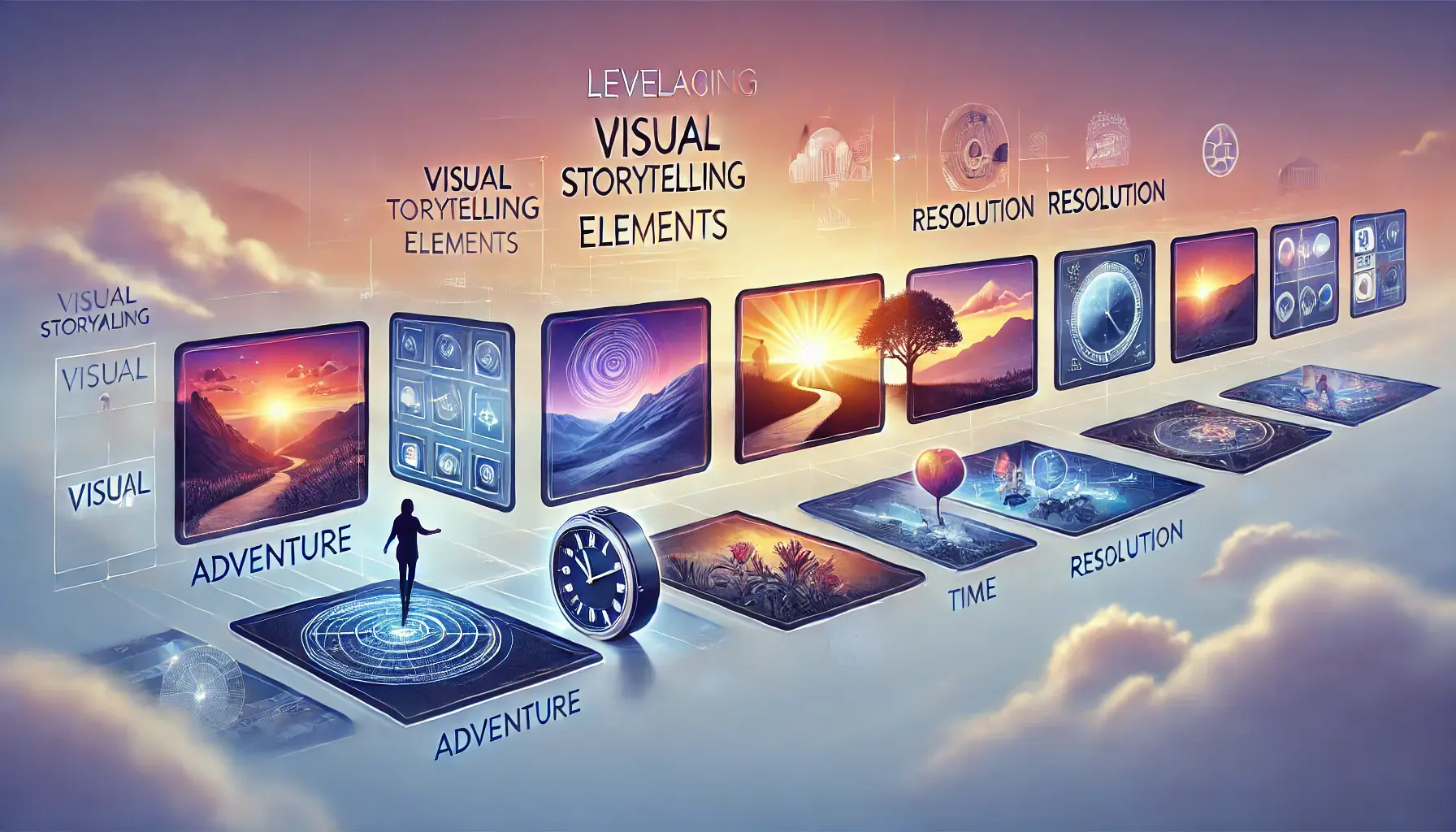
A visual representation of leveraging storytelling elements through evolving scenes that convey a narrative.
Leveraging Visual Storytelling Elements
Visual storytelling uses images, videos, and other visual media to convey a narrative.
This approach can simplify complex messages and capture attention quickly.
Utilize high-quality visuals that align with your brand narrative to enhance understanding and retention among your audience.

A symbolic representation of applying a consistent brand narrative across multiple platforms, connected through glowing lines.
Applying Consistent Narrative Across Multiple Platforms
Consistency in storytelling across each medium your brand touches ensures that your brand message is cohesive and recognizable.
Whether through social media, advertisements, or your website, maintaining a consistent narrative helps build trust and reinforces your brand identity.
Utilizing storytelling techniques like the Hero’s Journey and emotional brandingA marketing strategy that connects with consumers on an emotional level. can inspire and engage your audience, making your brand more relatable and memorable.

A visual representation of integrating storytelling techniques into Google Ads campaigns across various devices.
Implementing Storytelling Techniques in Google Ads Campaigns
Integrating storytelling into your Google Ads campaigns can significantly enhance engagement and conversion rates.
Here’s how to effectively apply storytelling techniques within the constraints of Google Ads:

A visual representation of crafting compelling ad copy with narrative elements in a creative workspace.
Crafting Compelling Ad Copy with Narrative Elements
Even with character limitations, it’s possible to infuse your ad copy with storytelling elements.
Focus on creating a concise narrative that resonates with your target audience:
- Identify the Protagonist: Place your customer as the hero facing a challenge.
- Present the Conflict: Highlight a common problem your audience experiences.
- Offer the Solution: Introduce your product or service as the key to overcoming the challenge.
For example, an ad for a time-management app might read: “Overwhelmed by tasks?
Regain control with our intuitive app—your partner in productivity.” This approach succinctly tells a story that potential customers can relate to.
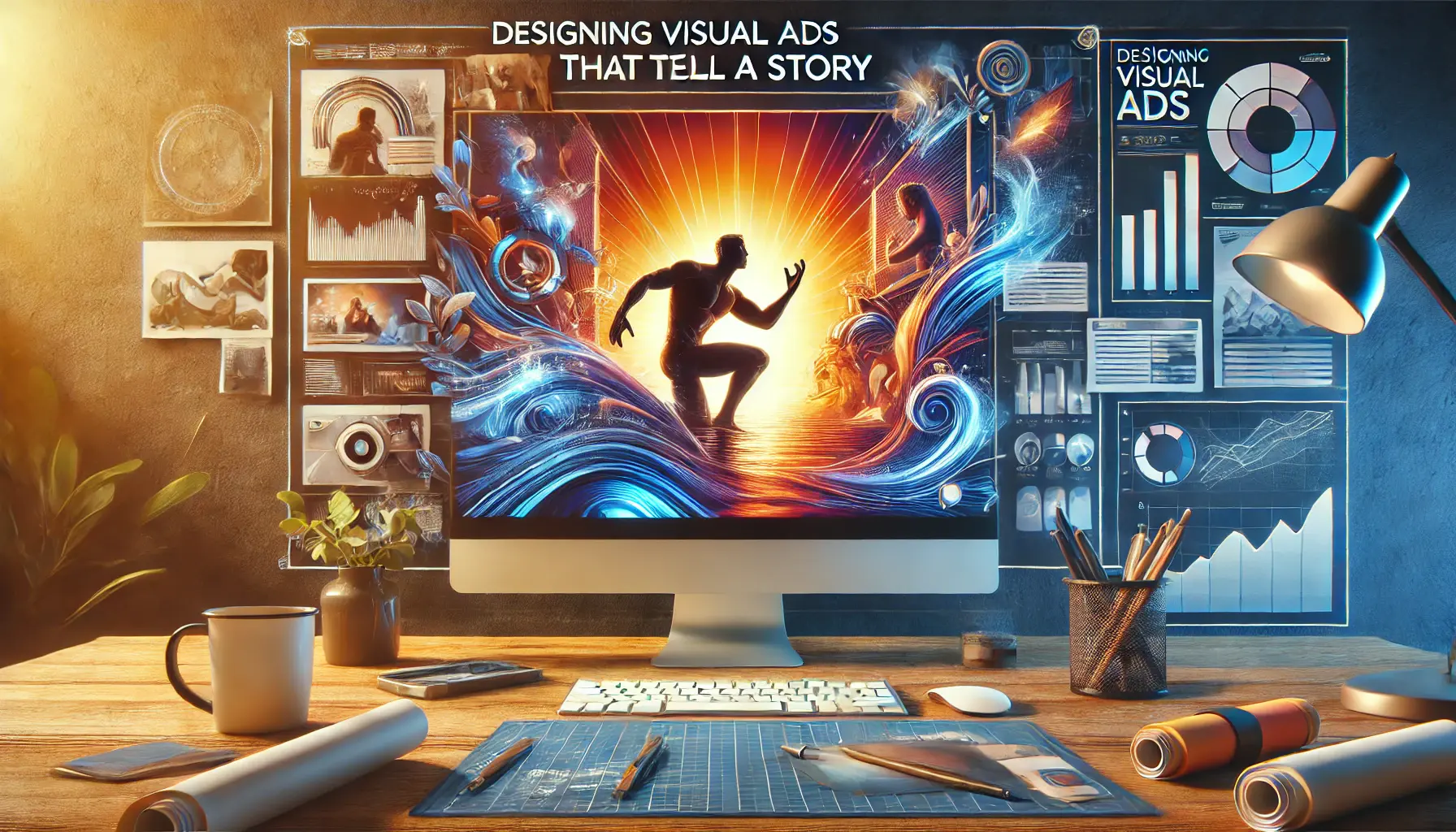
A visual representation of designing ads that tell a story, featuring a dynamic ad layout and creative workspace.
Designing Visual Ads that Tell a Story
Visual elements are powerful storytelling tools.
In display and video ads, use imagery and sequences that convey a narrative:
- Use Successive Imagery: Show successive images or video snippets illustrating a transformation or journey.
- Display Real Scenarios: Present relatable situations where your product solves an issue.
- Use Text Overlays: Provide text overlays to guide viewers through the storyline.
For instance, a video ad for a fitness program could show a person progressing from struggling with workouts to achieving their fitness goals, emphasizing the program’s effectiveness.

A visual representation of measuring storytelling effectiveness in ad performance through key metrics and data visualization.
Measuring the Effectiveness of Storytelling in Ad Performance
To assess the impact of storytelling in your ads, monitor key performance indicators (KPIs):
- Click-Through Rate (CTR): A higher CTR indicates that your story resonates with viewers.
- Conversion Rate: Track the percentage of users who take the desired action after clicking the ad.
- Engagement Metrics: For video ads, analyze metrics like view duration and completion rates.
Use A/B testingA method of comparing two versions of content to determine which performs better. to compare storytelling ads against standard ads.
This allows you to refine your approach with data-driven insights, ensuring your campaigns achieve maximum impact.
By thoughtfully integrating storytelling techniques into your Google Ads campaigns, you can create more engaging and effective advertisements that connect with your audience on a deeper level.
Incorporating narrative-driven elements in Google Ads campaigns can boost engagement and conversion rates, ensuring your message resonates effectively with your target audience.
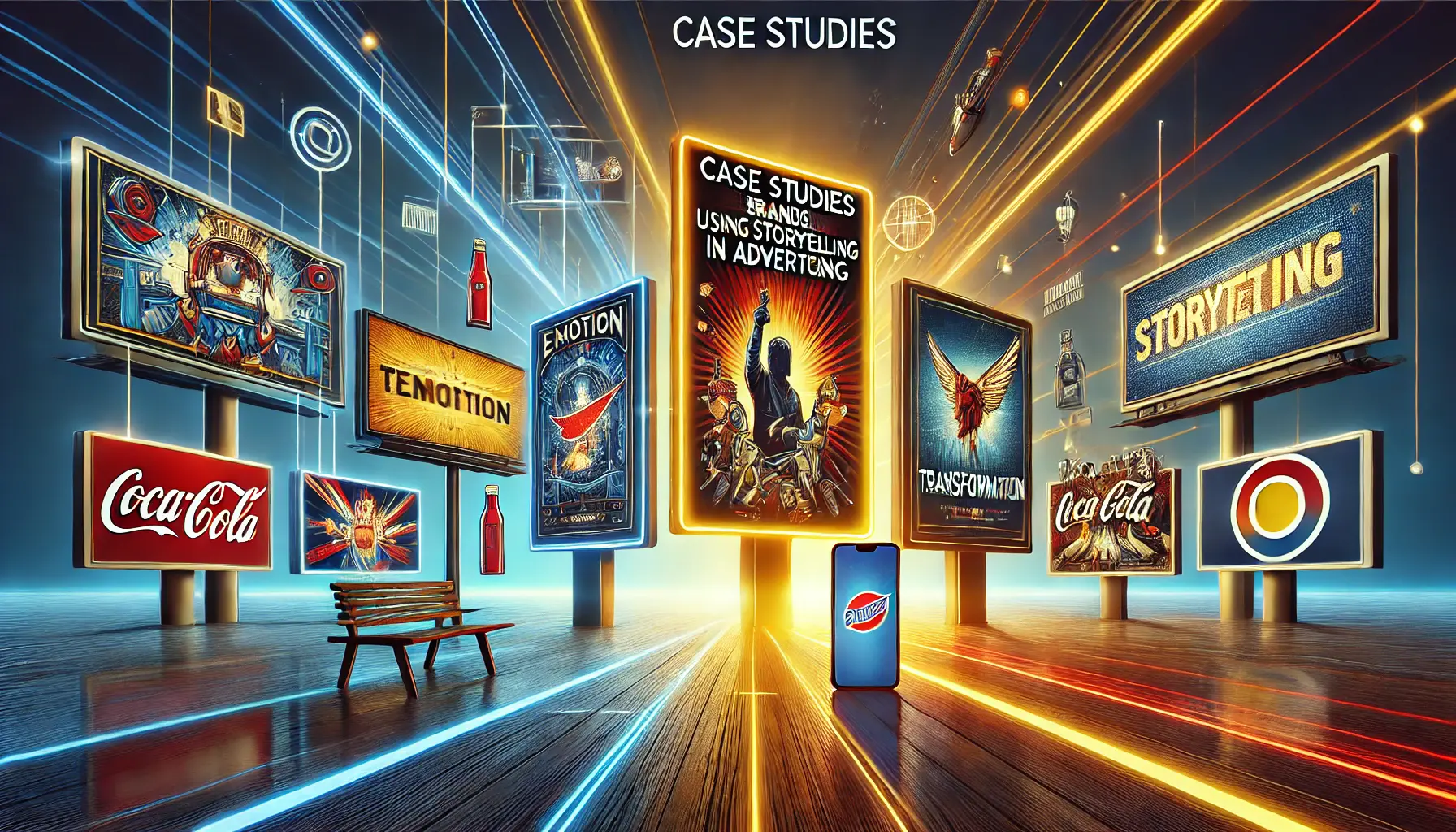
A visual representation of successful brand storytelling across various devices and platforms, showcasing different narrative techniques.
Case Studies: Brands Successfully Using Storytelling in Advertising
Exploring real-world examples of effective brand storytelling can provide valuable insights into crafting compelling narratives.
Here are three notable case studies:

A visual representation of Google’s ‘Parisian Love’ campaign, showing a mobile phone search story set in Paris with romantic landmarks.
Google’s ‘Parisian Love’ Campaign
Google’s ‘Parisian Love’ ad tells a touching story through a series of search queries, showing how the search engine plays a role in major life moments.
This approach not only highlights the product’s utility but also emotionally engages the audience, effectively enhancing the brand narrative.
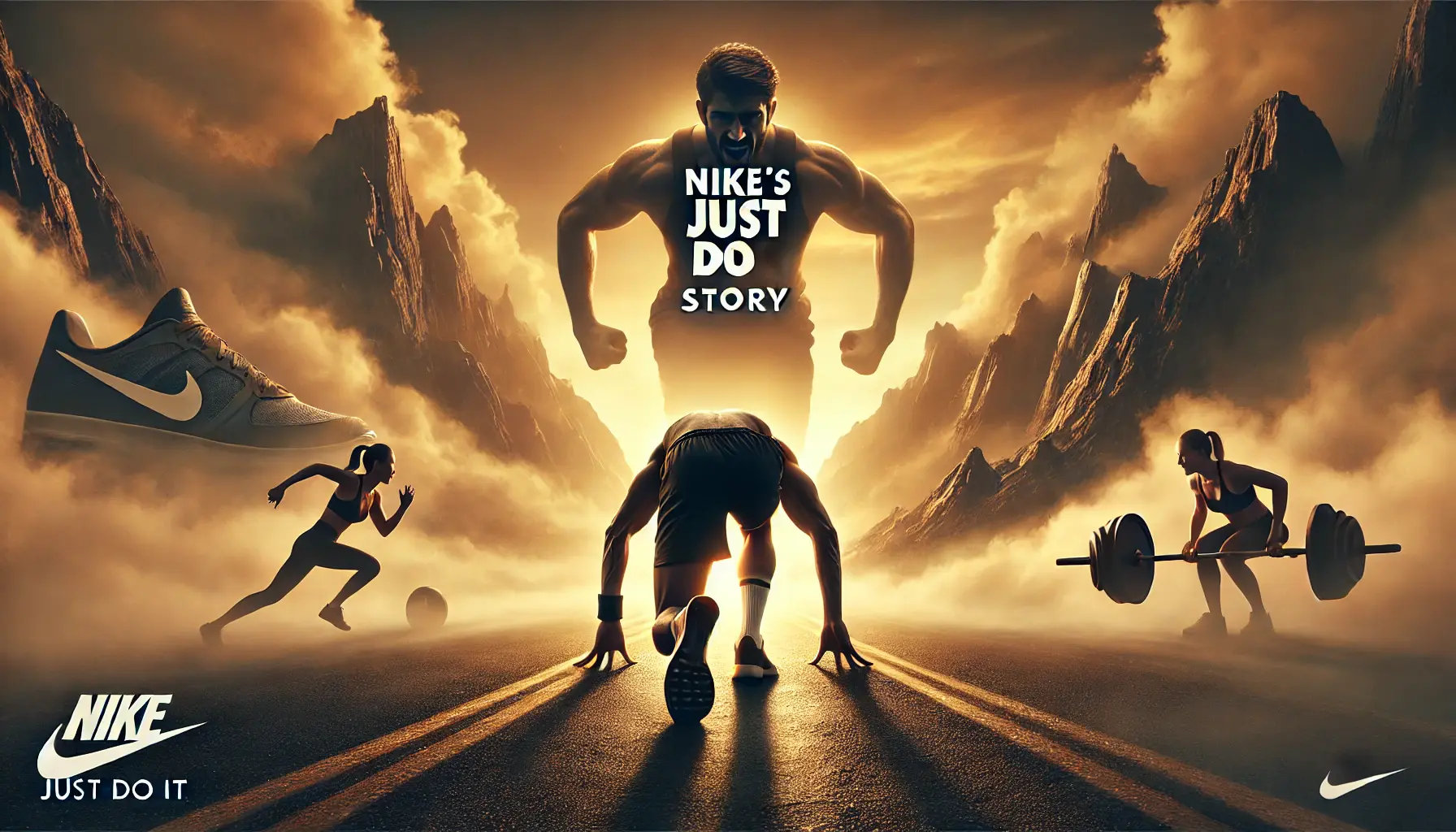
A visual representation of Nike’s ‘Just Do It’ campaign, showcasing an athlete in a moment of strength and determination.
Nike’s ‘Just Do It’ Story
Nike’s ‘Just Do It’ campaign features stories of athletes overcoming adversity, aligning the brand with themes of perseverance and determination.
This storytelling strategy reinforces Nike’s brand identity, inspires consumers, and strengthens their emotional connection to the brand.

undefined
Coca-Cola’s ‘Share a Coke’ Initiative
The ‘Share a Coke’ campaign by Coca-Cola personalized bottles with common first names, encouraging consumers to find and share them.
This initiative created personal connections and user-driven stories, ultimately engaging a wide audience and rejuvenating the brand’s image.
These examples demonstrate how the inclusion of storytelling in advertising can elevate brand narratives, fostering deeper connections with audiences and enhancing overall brand perception.
Learn from successful campaigns like Google’s ‘Parisian Love’ and Nike’s ‘Just Do It’ to understand how storytelling can emotionally connect with audiences and enhance brand perception.

A visual representation of best practices for developing a cohesive brand narrative, with collaboration and visual elements of brand values.
Best Practices for Developing a Cohesive Brand Narrative
Creating a cohesive brand narrative is essential for establishing a strong connection with your audience and differentiating your brand in the marketplace.
Here are key practices to guide you:

A visual representation of defining a brand’s core values and mission, symbolized by a glowing compass and key value icons.
Define Your Brand’s Core Values and Mission
Start by clearly articulating your brand’s core values and mission.
These elements serve as the foundation of your narrative, guiding all messaging and ensuring alignment with your brand’s identity.

A visual representation of understanding your target audience through data analysis and demographic insights.
Understand Your Target Audience
Gain a deep understanding of your target audience’s experiences and aspirations.
Craft your story to speak directly to their needs and desires, making your brand more relatable and engaging.

A visual representation of maintaining brand consistency across all platforms, with interconnected devices displaying the same brand elements.
Ensure Consistency Across All Platforms
Establish a single brand voice that resonates across your website, social media, and advertisements.
Consistency strengthens your brand and helps build trust with the audience.

undefined
Incorporate Authentic and Relatable Stories
Create genuine stories that reflect your brand’s values and mission.
Authenticity connects with audiences on an emotional level, fostering loyalty and long-term engagement.
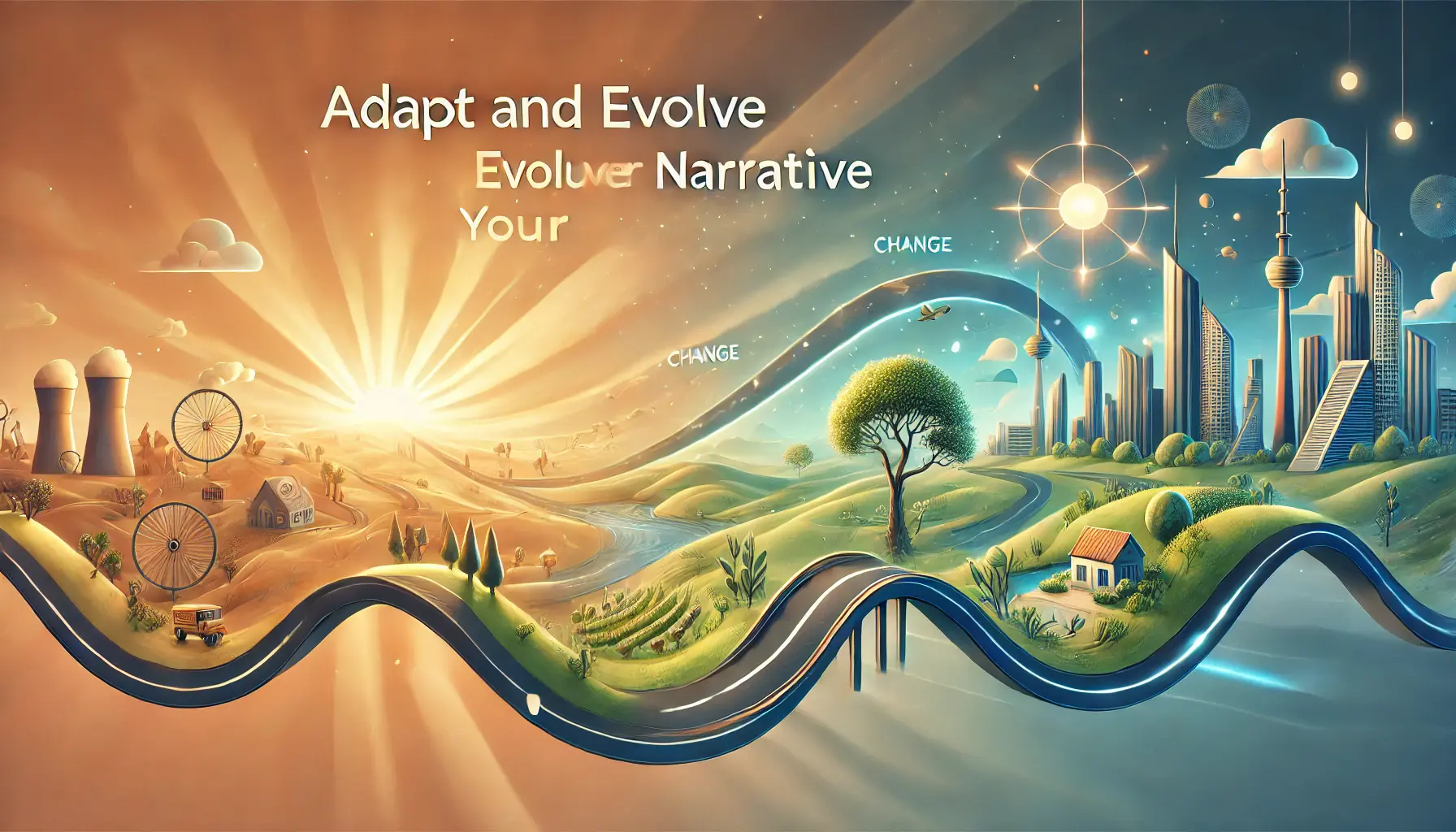
A visual representation of adapting and evolving a brand narrative, with transformation moments like a bridge, a growing tree, and a rising sun.
Adapt and Evolve Your Narrative
Your brand narrative should evolve as your company grows and market dynamics change.
A dynamic narrative keeps your brand contemporary while remaining true to its core values.
By following these best practices, you can craft a clear and compelling brand narrative that reflects your brand’s personality and resonates with your target audience.
Consistency and authenticity are essential in crafting a cohesive brand narrative that resonates with your audience and strengthens your brand identity.

A visual representation of mastering the art of brand narrative in advertising, showcasing a director guiding a powerful story.
Conclusion: Mastering the Art of Brand Narrative in Advertising
In today’s competitive marketplace, crafting a compelling brand narrative is not just a strategy—it’s a necessity.
By integrating storytelling techniques into your advertising campaigns, you can foster emotional connections, build trust, and leave a lasting impression on your audience.
This article has explored essential storytelling methods and their application in advertising, offering a roadmap for elevating your brand narrative.

undefined
Key Takeaways
- Understand the Importance: A strong brand narrative is much more than logos and taglines; it builds an emotional connection with audiences.
- Leverage Storytelling Techniques: Use the Hero’s Journey, emotional branding, and visual storytelling to captivate your audience.
- Implement in Campaigns: Employ narrative-driven elements in Google Ads while maintaining consistency and relatability across platforms.
- Learn from Success Stories: Draw inspiration from case studies like Google, Nike, and Coca-Cola, which demonstrate the power of storytelling in advertising.
- Follow Best Practices: Develop a cohesive narrative by defining core values, understanding your audience, and adapting to market changes.

A visual representation of final thoughts, with a person contemplating a peaceful landscape at sunset.
Final Thoughts
Storytelling can transform and elevate your brand narrative in ways that make your advertising both more effective and memorable.
Using these techniques while tailoring them to your brand gives you the opportunity to craft advertisements that deeply resonate with your audience and foster strong loyalty in the long run.
Whether refining Google Ads campaigns or rethinking your overall marketing strategy, remember that authenticity and consistency are the cornerstones of every great brand story.
Paying attention to these elements will make your brand unique and pave the way for long-lasting success in the ever-evolving advertising landscape.
Using storytelling techniques in advertising not only creates a lasting impression but also fosters strong emotional connections and loyalty among consumers.

A visual representation of a discussion about brand narrative in advertising, with icons and charts symbolizing exploration and inquiry.
Your campaigns can be managed by an agency specialized in Google Ads, check out our service page.
Frequently Asked Questions About Brand Narrative in Advertising
Understanding the nuances of brand narrative in advertising can be complex.
Here are some common questions and concise answers to guide you:
A brand narrative is a cohesive story that encapsulates a brand’s mission, values, and identity, connecting emotionally with the audience.
Storytelling engages consumers on an emotional level, making advertisements more memorable and fostering a deeper connection with the brand.
Identify your brand’s core values, understand your target audience, and craft authentic stories that resonate with their experiences and aspirations.
Utilizing the Hero’s Journey framework, emotional branding, and visual storytellingThe use of images, videos, or graphics to convey a narrative. are effective techniques to enhance brand narratives.
A well-crafted brand narrative builds trust by showcasing authenticity and aligning with consumers’ values, leading to increased loyalty.
Yes, integrating storytelling elements into ad copy and visuals can increase engagement and conversion rates in Google Ads campaigns.
Maintain a unified brand message across all channels, including social media, advertisements, and your website, to reinforce brand identity.
Campaigns like Google’s ‘Parisian Love’ and Nike’s ‘Just Do It’ effectively use storytelling to connect with audiences and enhance brand perception.
Monitor key performance indicators such as click-through rates, conversion rates, and engagement metrics to assess the impact of storytelling.














